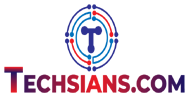This is when a teacher gives students helpful feedback to help them improve in a specific area. Corrective feedback is the communication to a student that’s intended to modify the learner’s behavior or way of thinking to improve learning. That is why I taught all me students to use a grade calculator. It redirects learners and offers support when they make an error. In the context of behavior, there may be a thin line difference between positive and corrective feedback. Positive feedback is the act of describing particular behavior, emphasizing a kid’s strengths and competencies. I always made sure my students knew how to use a high school GPA calculator. Corrective feedback is the act of describing the behavior and offering an alternative action, asking what the child could have done differently.
The key benefits of corrective feedback include:
- It makes pupils less defensive. Here, the child is more likely to accept the feedback as help from the teacher instead of criticism.
- Corrective feedback focuses on the solution instead of the individual. It focuses on what the kid can do, not on what the child should have done.
- It gives students options on how to rectify their behavioral skills. They can concentrate on their replacement behavior rather than how they appear to their parents/teachers, or peers.
Corrective feedback can take different forms, some of which include:
Correct answer feedback: The teacher provides the learner with the correct answer. In oral reading instruction, this kind of feedback can be further differentiated as word supply and phonetic emphasis. Multiple studies have shown that supplying the entire word is more useful than the phonetic emphasis in minimizing errors.
Error flagging: This involves highlighting where an error happened when the learner’s response includes multiple components like in mathematics instruction.
Recast: Here, the teacher implicitly reformulates the learner’s errors or provides the correction without directly indicating that the learner’s utterance was incorrect.
Elaborations/explanation: This involves providing additional hints, prompts, or information and may or may not include error flagging or correct answer feedback.
Here’re some effective methods to give corrective feedback.
- Teachers should acknowledge students’ goals. They should share that they know why students are behaving this way before giving the feedback. This helps students know that the teacher is trying to help them.
- Teachers should give students an alternative. They should give proper direction on the best way to behave or act in the given situation.
- Teachers should understand when to communicate in a group or one-on-one because knowing the ideal time to give feedback. If the teacher embarrasses the students, they’re less likely to receive feedback.
Conclusion
Feedback is one of the most important parts of teaching and learning. Without it, students do not know how well they are doing are how close they are to mastering a skill or objective. It forms the core of the learning process and cannot be sidestepped. If you want to be a good teacher, learn to give good feedback. Then it’s all downhill from there. How do I know? Because I was a teacher for a decade, it was my secret weapon. If you have any further questions about corrective feedback, let me know.

